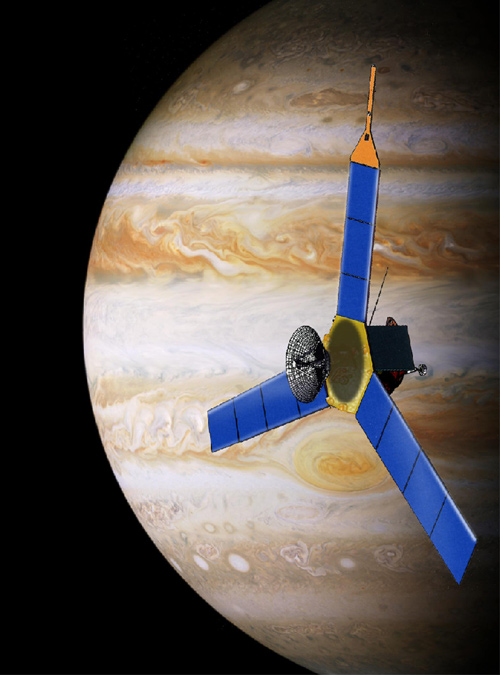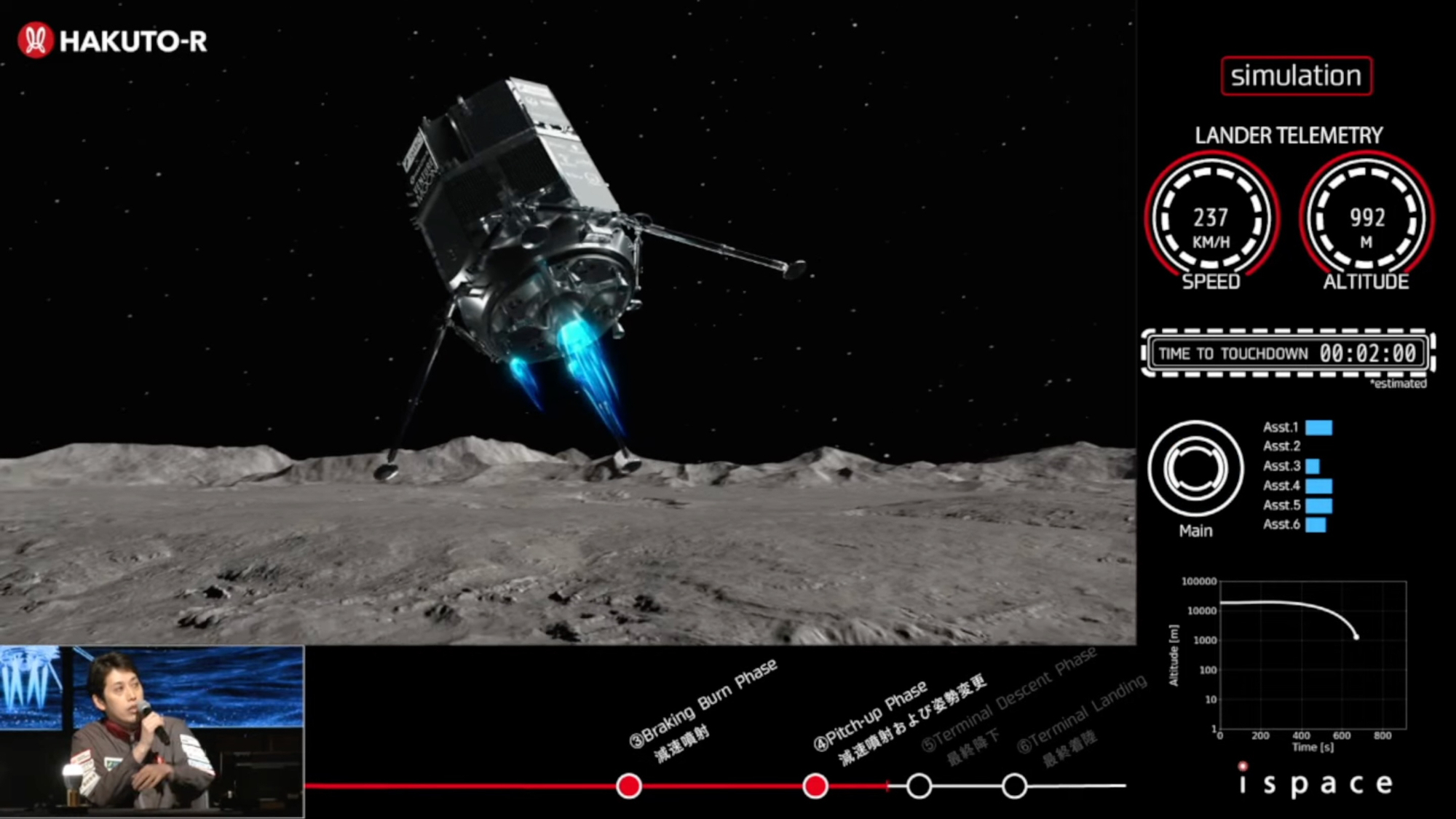The Juno Mission to Jupiter

NASA has announced the selection of a new concept study for a Jupiter mission that will now move into a preliminary design phase. The mission is called Juno, and its goal is to perform a detailed study of the giant planet Jupiter.
The Juno spacecraft would be placed in a polar orbit around Jupiter. This would allow it to perform detailed gravitational measurements that could detect whether or not Jupiter has an ice-rock core beneath its clouds of hydrogen and helium. The mission will also study the composition of Jupiter's atmosphere, determining the amounts of water and ammonia present. Another investigation will be a study of convection within Jupiter's atmosphere and the profiles of deep winds. In addition, Juno will explore Jupiter's magnetosphere, especially in the unmapped polar regions, and attempt to determine the origin of the jovian magnetic field.
The Principal Investigator for the Juno mission is Dr. Scott Bolton, from the Southwest Research Institute in Boulder, CO. The mission's attempt to determine the amount of water present within Jupiter is especially intriguing, since Jupiter contains more matter than the rest of the planets in the solar system combined. Thus, once Jupiter's composition is more definitively known, scientists will have a better idea of how much water was available in the solar system during the early planet-building phases.
Two instruments on the Juno mission are JADE, the Jovian Auroral Distributions Experiment, and the Juno Ultraviolet Spectrograph (UVS). JADE will study the population of particles which make up Jupiter's aurora by measuring electrons and ions along Jupiter's magnetic field lines. The UVS will work alongside JADE by taking images of the ultraviolet emissions of the aurora. Simultaneous observations will allow a synthesis that combines direct images of the aurora with detailed studies of the particles present at that point in time. The UVS will provide images taken directly above the north and south poles of Jupiter, a perfect vantage point to view the entire aurora at once. Juno will also have a variety of other instruments, including a magnetometer to study the magnetic field, a microwave spectrometer which will measure the amounts of ammonia and water, and an imager which will take movies of Jupiter's clouds. It is possible that the imager may also be able to provide images of some of Jupiter's closest moons, including Io and Amalthea.
The current announcement means that Juno will enter a preliminary design phase. After this study is complete, the mission will have to pass a confirmation review that will determine whether or not the mission can meet certain scheduling, cost, and technical requirements before it can be confirmed for the development phase. Juno was selected over another mission that had been under consideration in the New Frontiers program, a lunar robotic sample return mission called Moonrise. To meet the terms of the New Frontiers program, Juno must be launched by June 30, 2010, and has a maximum mission cost of $700 million.
The New Frontiers program is part of NASA's new initiative that allows PI-led medium-class missions. These missions are supposed to address important issues identified in the Decadal Solar System Exploration Study from the National Research Council that are not already covered by current NASA missions. Juno would be the second mission in NASA's New Frontiers Program, following the New Horizons mission to Pluto that is currently in development, and is scheduled to fly by the Pluto-Charon system in 2014.
Get the Space.com Newsletter
Breaking space news, the latest updates on rocket launches, skywatching events and more!
Join our Space Forums to keep talking space on the latest missions, night sky and more! And if you have a news tip, correction or comment, let us know at: community@space.com.
